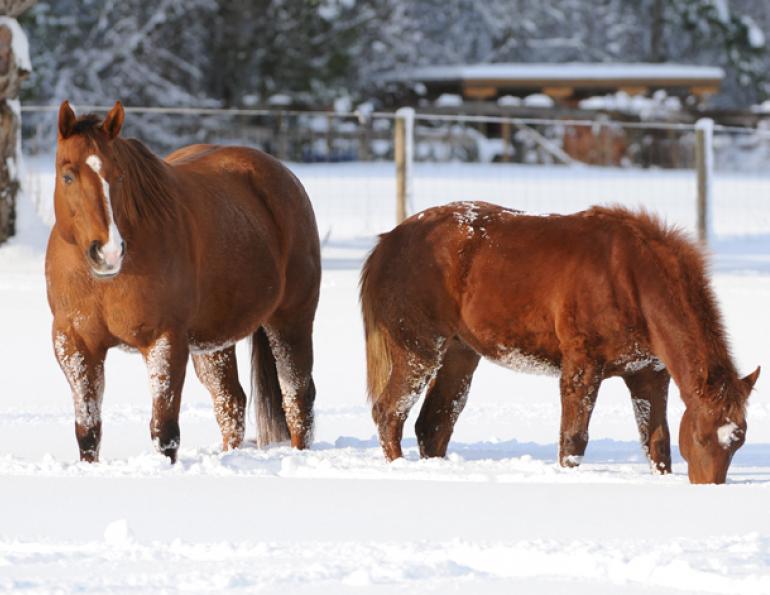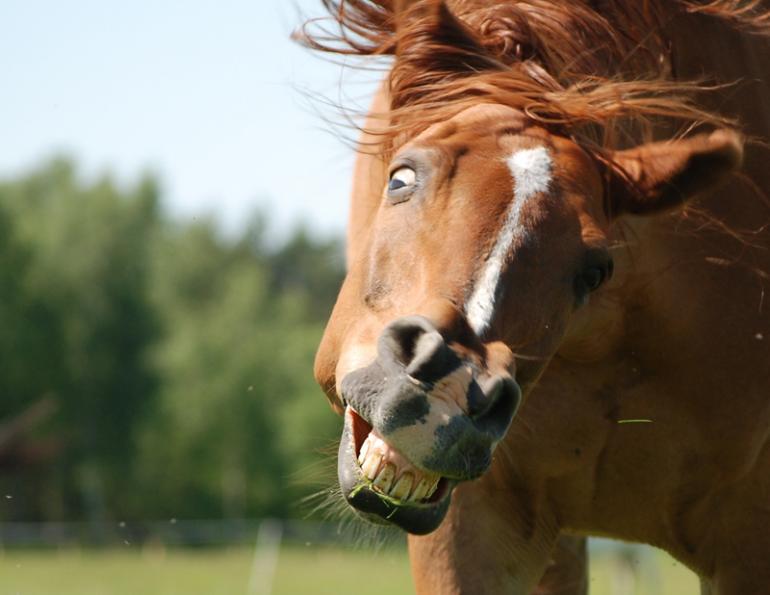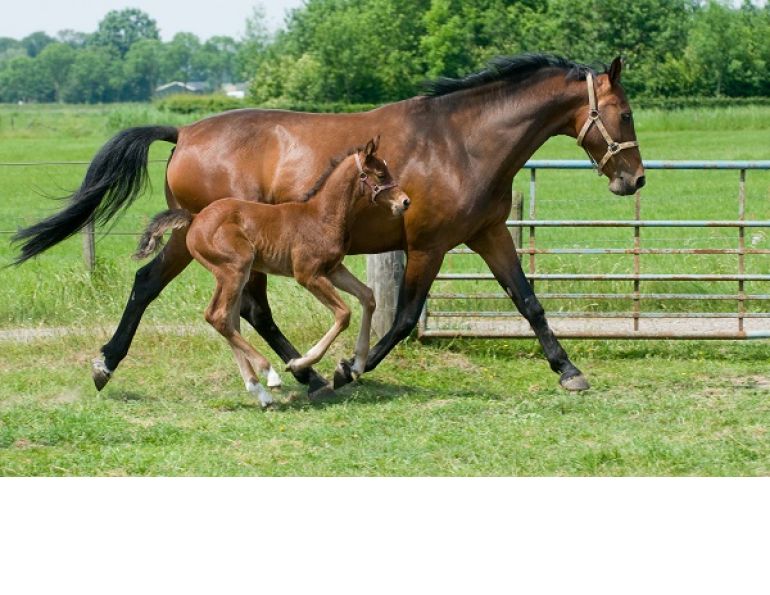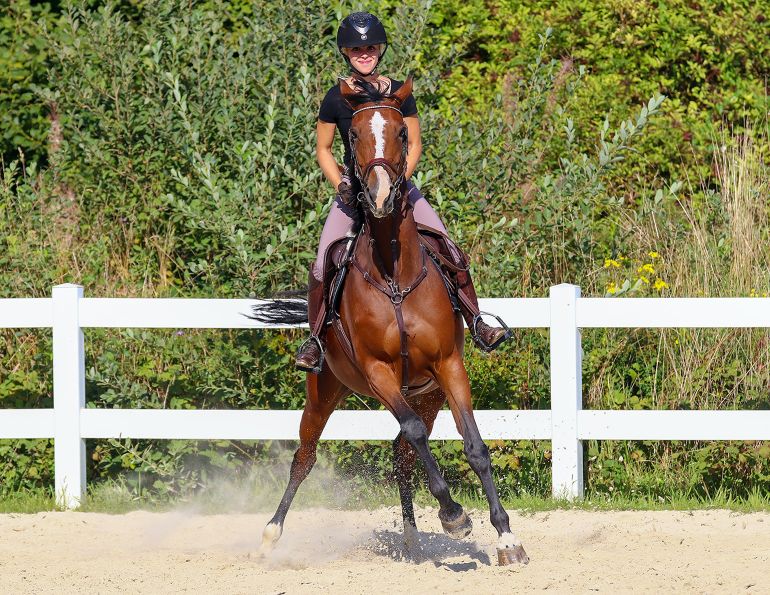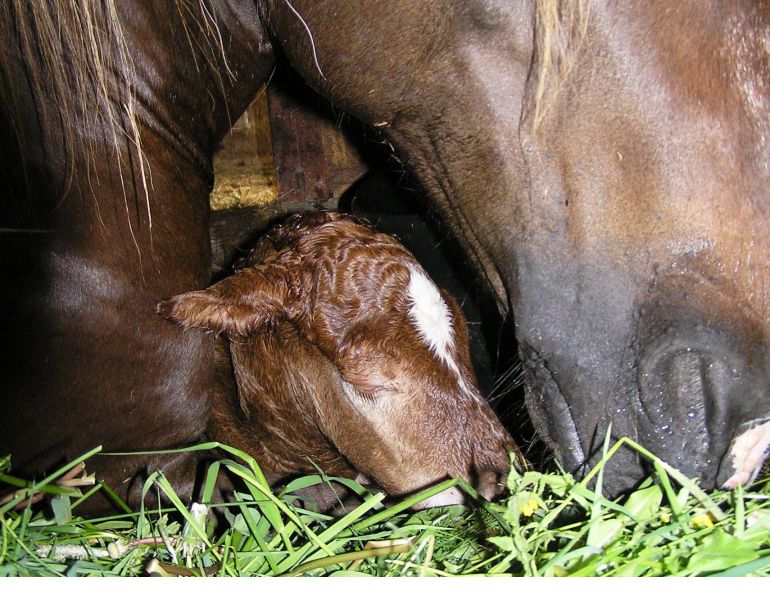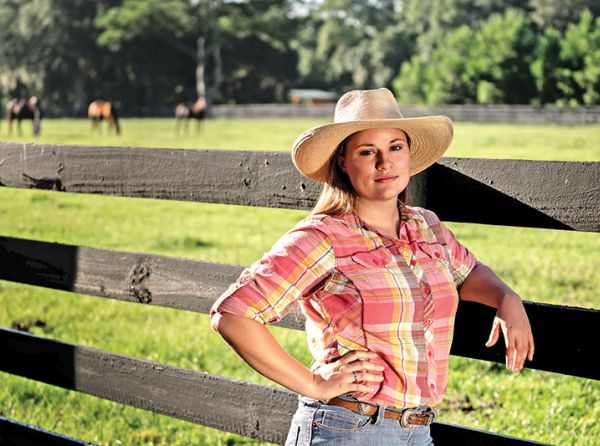By Kentucky Equine Research
Quiz Time!
Which of the following statements concerning broodmares and body condition is true?
A. Broodmares should enter the breeding season ribby and be fed to steadily gain weight until pregnancy is achieved.
B. Broodmares should enter the breeding season fleshy but not fat and be maintained at this weight until confirmed in foal.
C. Broodmares should enter the breeding season slightly pudgy and be allowed to drop weight until pronounced in foal.
D. Broodmares should enter breeding season chubby and stay that way until pregnancy is documented.
If you chose D, you're right!
However, descriptions such as “ribby” and “pudgy” are vague. One horseman may characterize a mare as “heavy,” while another would describe her as “fatter than a county fair hog.” By these descriptions, neither horseman may know just how fat that mare truly is!
Since the mid-1980s, nutritionists, farm managers, veterinarians, and animal welfare workers have employed a universal method of measuring weight and fat distribution developed by Dr. Henneke. This process, called body condition scoring, has become a valuable management tool on breeding farms worldwide. By visually and manually evaluating certain anatomical regions (namely the neck, shoulder, withers, ribcage, backbone, and tailhead), horsemen assign horses and ponies a score between one and nine, with one designating extreme emaciation and nine indicating out-and-out obesity. Broodmares are typically maintained in the condition score range of five to seven, with some individuals obviously falling below or above that range.
|
Mares should be kept at a body condition score between 6 and 7.5 leading up to breeding season and through the duration of their pregnancy. |
These three body condition scores are described in this way:
5 — Moderate: Back is flat (no crease or ridge); ribs not visually distinguishable, but are easily felt; fat around tailhead beginning to feel spongy; withers are rounded; shoulders and neck blend smoothly into the body.
6 — Moderately Fleshy: Might have slight crease down back; some fat cover over the ribs and along the sides of the withers; fleshy behind shoulders and along the side of the neck; fat around tailhead is soft.
7 — Fleshy: Might have crease down back; individual ribs can be felt but noticeable fat deposition between the ribs; fat deposited along withers, behind shoulders, and along neck.
Numerous scientific trials have demonstrated the relationship between body condition and fertility. One field trial followed 927 mares from the beginning of the breeding season through pregnancy confirmation. Mares were given a body condition score at the onset of the season and, based on that assessment, they were divided into three subsets:
1. Mares with a body condition score of less than five (158);
2. Mares with a body condition score of five, six, or seven (667 mares);
3. Mares with a body condition score greater than seven (102 mares).
Mares with a low body condition score were least likely to conceive. Of these 158 mares, only 71 percent achieved pregnancy. In the two remaining groups, pregnancy rates were markedly higher, 92 percent in mares with a body condition score of five, six, or seven, and 96 percent in mares with a body condition score greater than seven.
In addition to pregnancy rates, mares with low body condition scores required nearly 2.8 heat cycles per conception, while more well-conditioned mares required only 1.4 heat cycles per conception. If mares are in low body weight at the onset of breeding season, first ovulation may lag three to four weeks behind that of mares carrying more weight. This is meaningful because breeding managers bank on getting open or maiden mares in foal early in the season prior to the influx of foaling mares.
|
In winter, a mare’s ribcage may be hidden under a full coat. Always palpate for fat deposits in other key areas including along the withers, behind the shoulder, and around the tailhead, to make an accurate evaluation of body condition. |
Early fetal survival is also affected by body condition of the mare. Losses are significantly greater in mares with body condition scores of four or less.
Environmental and physiological stresses will affect the body condition of mares as breeding season nears. Competition for food by herd-mates or scarcity of feed in winter may lead to thinness. Moreover, lactation can easily deplete energy stores of mares, leaving them with reduced body condition and breeding efficiency.
Some horsemen feel that mares maintained at condition scores of six or higher will experience foaling complications. Extensive research has shown that mares in moderately fleshy condition or heavier (a score of seven or higher) did not encounter problems often associated with obesity, including prolonged pregnancy and decreased foal size or vitality at birth.
Though every mare should be managed individually with her best interests in mind, a few general recommendations can be made:
• Maintain open or maiden mares at a body condition score of six or seven leading up to the breeding season. For pregnant mares that will be lactating in late winter or spring, a condition score of seven or 7.5 is ideal. Keeping mares at condition scores higher than 7.5 does not enhance fertility and is not wise from an economic standpoint.
• Evaluating the body condition of pregnant mares may become more difficult during late gestation, as the combined weight of the fetus and amniotic fluid may pull the skin tightly over the vertebral column and ribcage. Therefore, it’s best to place emphasis on other key areas: along the withers, behind the shoulder, and around the tailhead.
• Do not rely completely on visual appraisal to assess body condition. By palpating certain areas, evaluators can more accurately judge body condition. For example, ribs that are not visible may or may not be felt easily. Palpation is particularly important in winter when mares likely have winter coats. If possible, have the same person evaluate condition on a monthly schedule, as this will ensure a degree of consistency.
Main Article Photo: Robin Duncan Photography
This article was published in the December 2010/January 2011 issue of Canadian Horse Journal.



